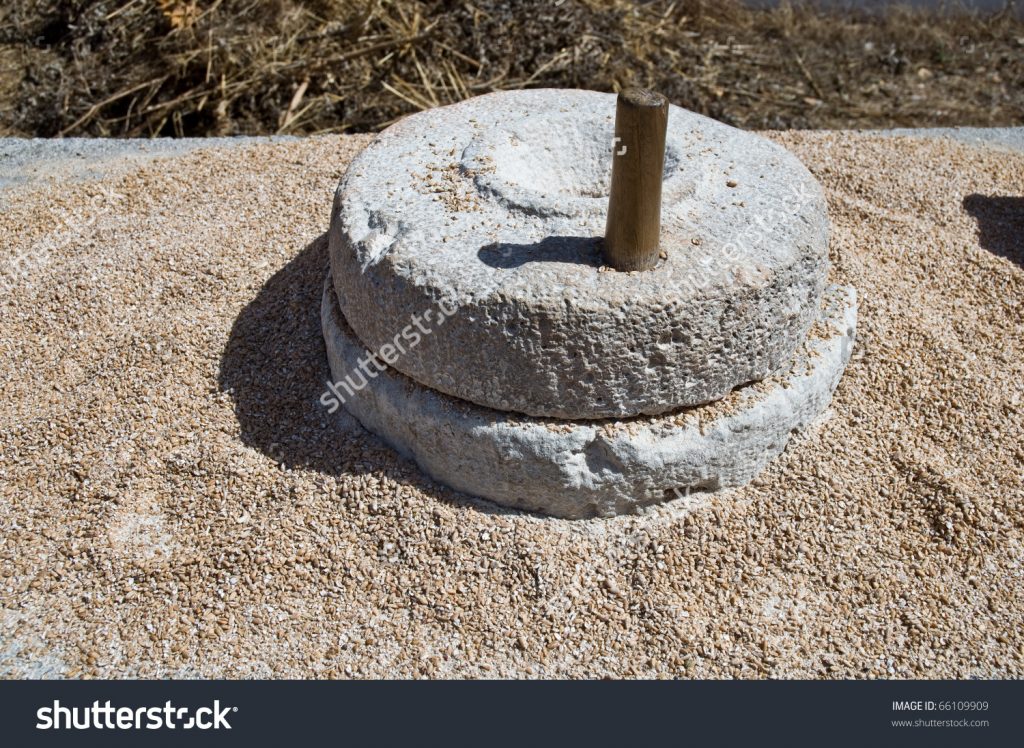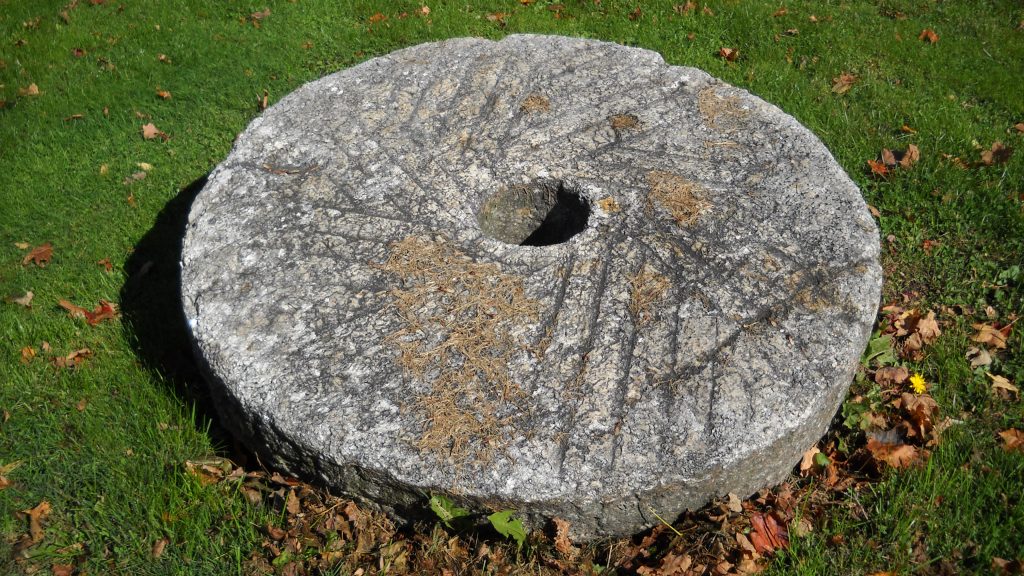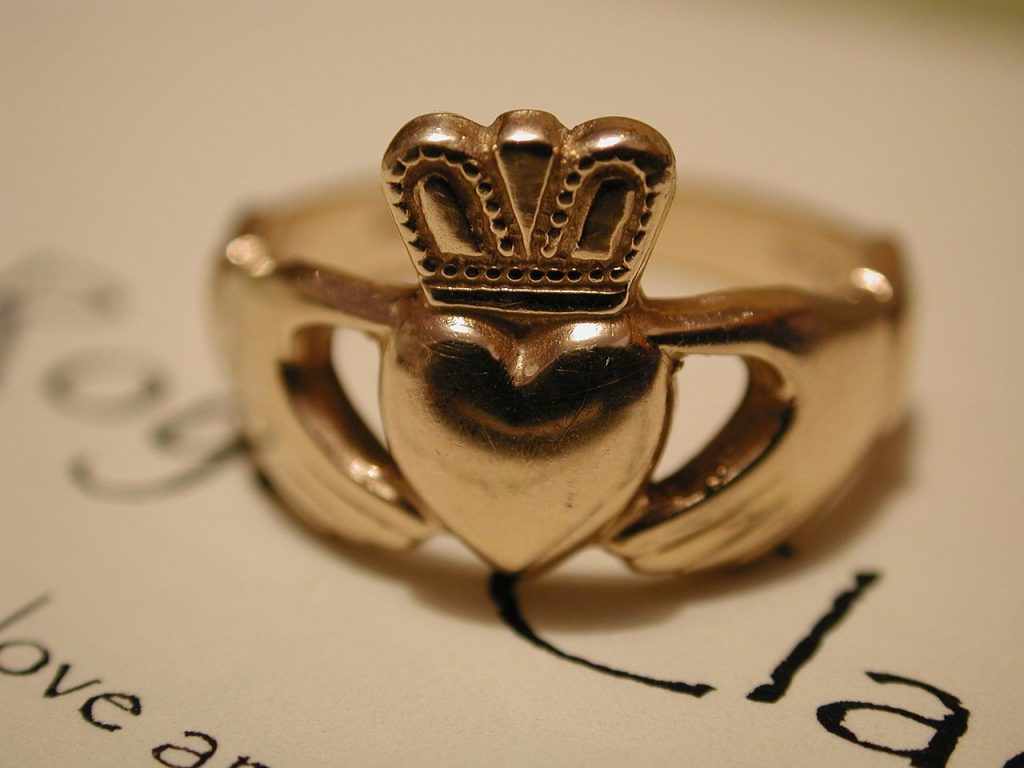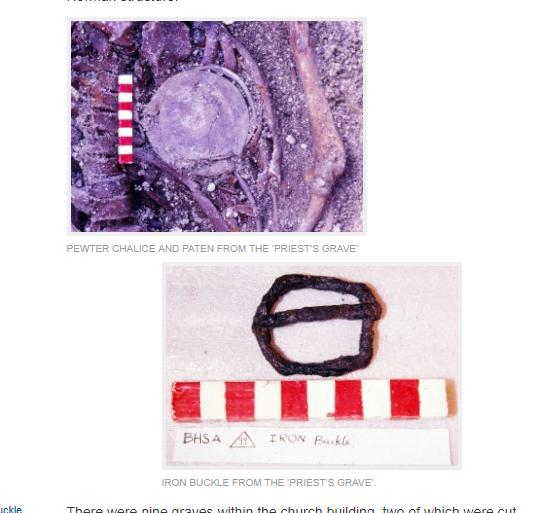Mysterious Coffin Deposit June 10, 2017
Author: Beach Combing | in : Medieval, Modern , trackbackJohn Aubrey (1626-1697) gives this curious description in Remaines (1689). What has he found here?
At Priorie St Mary in the parish of Kington St Michael [in Wiltshire], have been formerly, and also lately found upon digging in the garden, in consecrated ground, severall coffins of freestone; they have all a hole, or two in the bottom, bored with an augur. There was found, 1637, a round stone like a little Grind-stone, of about 16 inches diameter, in the center whereof was a Heart held by two right hands, only on one side. To what use it served I could never learne: It was found at the foot of a Grave in which there was found a Chalice.
A grindstone is, of course, the circular spun stone use to sharpen metal. An image of one above. The stone though, described by Aubrey, seems not to have had a hole at the centre but a heart and the two right hands, carved upon it? This sounds as if it is a late medieval or early modern object: Aubrey himself notes that in his own time the image of a heart between two right hands was put on rings for sweethearts. This is certainly a reference to the Claddagh ring which was allegedly (dixit Wikipedia) first made in the seventeenth century.
But what was this thing and why was it put in a coffin with a chalice (ecclesiastical?). Freestone coffins were used as far back as the later Roman empire in Britain, the holes were presumably to allow run off to escape from the rotting body? But these are distractions. What is the mysterious stone disc that Aubrey handled? drbeachcombing At yahoo DOT com
Chris from Haunted Ohio Books writes, 30 Jun 2017:
The “round stone like a little Grind-stone” suggests a stone from a hand-mill, rather than a sharpening stone, which are usually elongated or rectangular. And it was found at the “foot of the grave,” so perhaps there was only an accidental association with the grave containing the chalice. It is maddening that Aubrey does not describe the blessed thing–the Romans certainly had chalice-like vessels, as did earlier peoples. A priest would have been buried with his chalice AND paten, (see link) but a paten was, like all sacred vessels, required to be made of precious metals. I’m not aware of any stone patens and certainly no pattens as large as this object. Patens were generally 5-9 inches across.
Taken from… hampshirearchaeology.
So, still a mystery object, but not for sharpening, but for grinding corn on a smaller scale than, say, a wind-mill. It is possible the object was a worn-out hand-mill stone repurposed for a grave marker.
Here’s a picture of a stone hand-mill (for information only–couldn’t find a good non-copyright image in a hurry!) [Beach dares the Gods of Copyright: i defy thee!]






